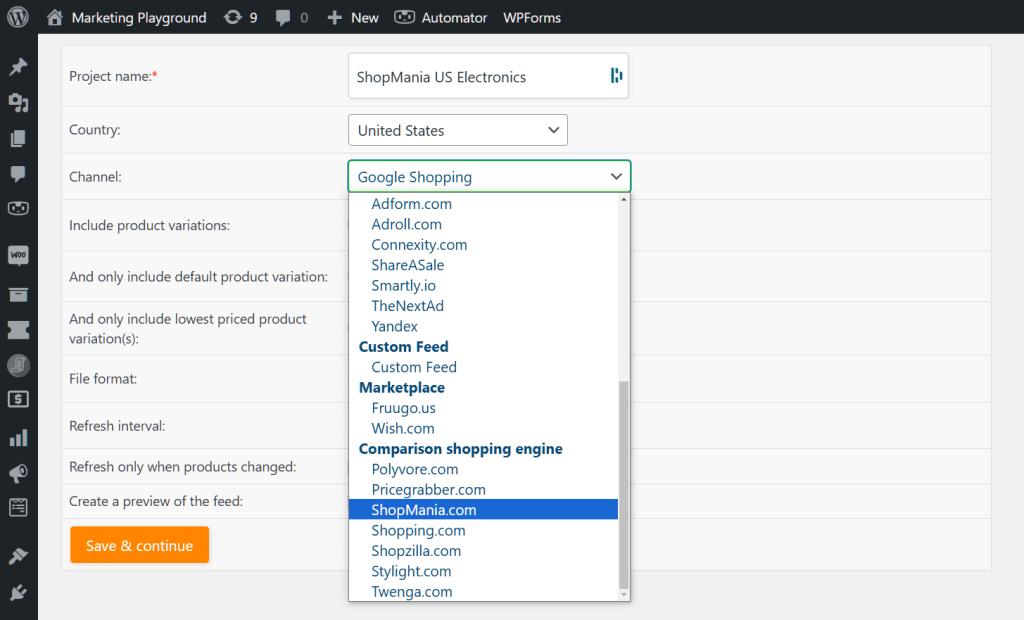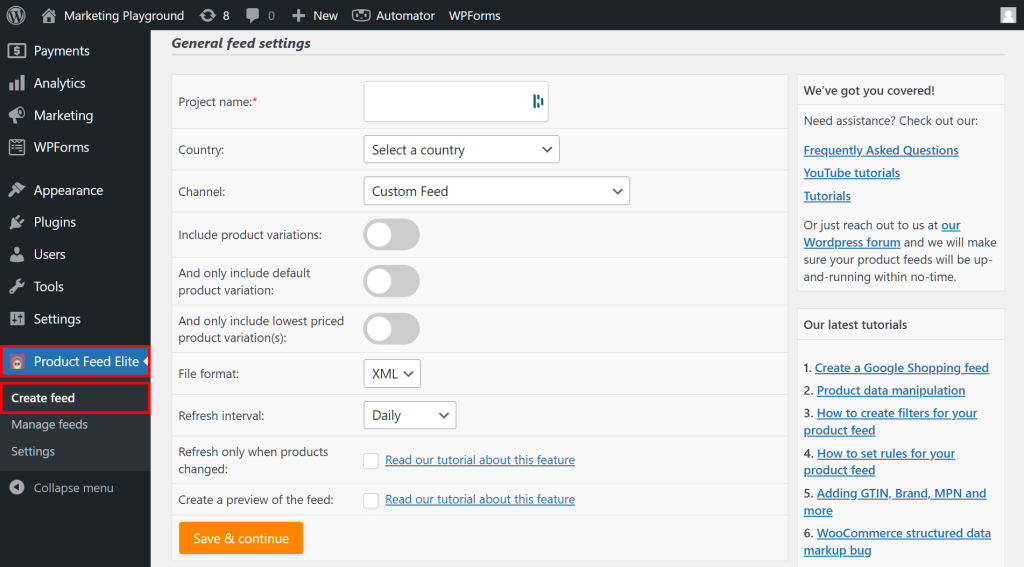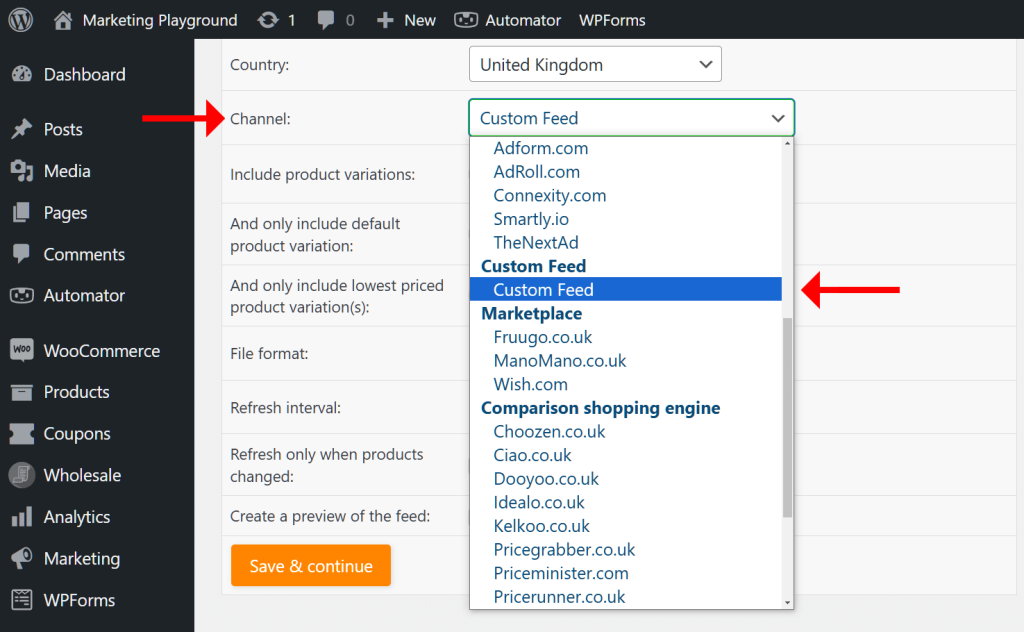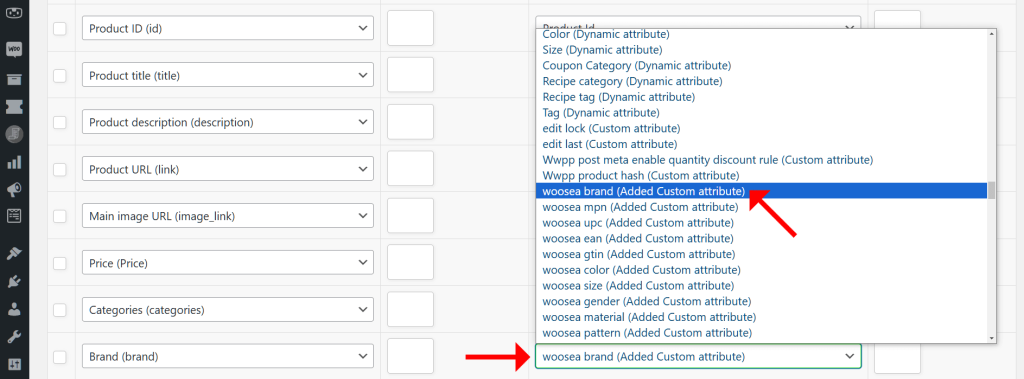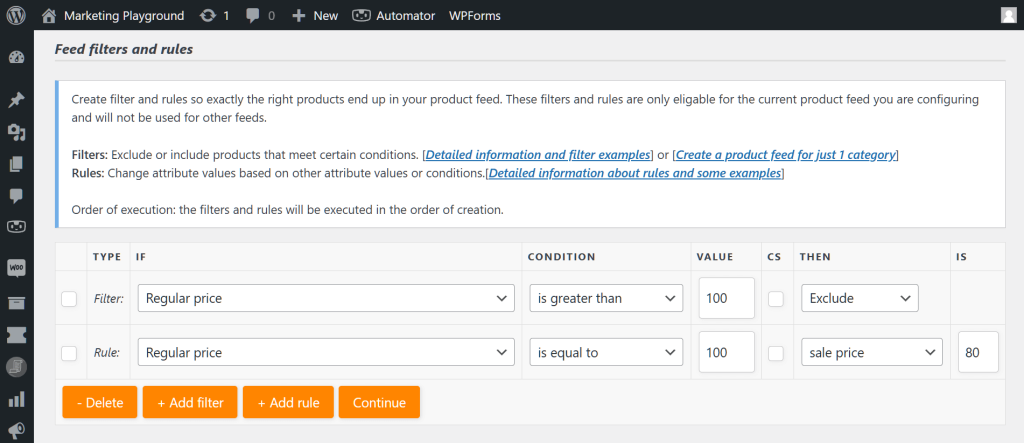
Creating a custom feed for your product listings is essential for e-commerce businesses that want to maximize their online presence.
Why? Simply put, custom feeds allow you to tailor your product information to meet the specific requirements of different sales channels. Thus, they ensure your products are accurately displayed and easily discovered by potential customers.
In this article, we’ll walk you through the process of creating a custom product feed, highlighting the key steps and best practices to help you achieve optimal results.
So let’s get right into it!
Table Of Contents
- I. Why Create A Custom Feed For Your Product Listings?
- II. How To Create A Custom Feed For Product Listings
- III. How To Upload Your Custom Feed To A Sales Channel
- Conclusion
I. Why Create A Custom Feed For Your Product Listings?
Before we can understand the importance of custom product feeds, it’s crucial to understand a key feature of product feed plugins: product feed templates.
A product feed plugin or software is a tool used to create, manage, and optimize product feeds for various online platforms, such as comparison shopping engines, marketplaces, and advertising networks.
Now, a good product feed plugin offers feed templates, which streamline the process of setting up feeds for different sales channels. These templates are pre-configured to meet the specific requirements of such channels, ensuring that your product data is correctly formatted and optimized for visibility and performance.
However, depending on your choice of plugin, it may not have the template for the sales channel you want to submit your product feed to. However, this doesn’t mean it’s impossible to showcase your product listings through your preferred channel.
With a custom product feed, you can set up the feed exactly as you need it—including in such a way that it meets the requirements of your preferred sales channel, even if a pre-configured template isn’t available. This flexibility allows you to tailor the feed to any platform’s unique specifications and formatting rules. Thus, it ensures that your product data is accurately and optimally displayed.
II. How To Create A Custom Feed For Product Listings
If you’d like to create a custom feed for your products, then you need the best tool available. This is where AdTribes comes in.
Offering both free and premium versions, AdTribes is a top-ranked product feed solution for WooCommerce platforms. And it’s got everything you need to showcase your offerings through sales channels all over the world—including a feature enabling you to create custom feeds.
Of course, for AdTribes to work, you must first ensure you already have an online store powered by WordPress and WooCommerce.
Once you’ve downloaded, installed, and activated AdTribes, you can access the plugin by heading to your WordPress dashboard, then finding Product Feed Pro if you’re using the free version, or Product Feed Elite if you’re using the premium one.
Take note: Product Feed Elite boasts additional features that empower you to create the ideal custom feed for your offerings. Thus, in the following tutorial, we’re going to assume that you’re using Product Feed Elite.
Now that you know how to access AdTribes, it’s time to learn how to create a custom feed!
Step 1: Configure your custom feed’s general settings
After navigating to Product Feed Pro or Product Feed Elite, click the Create feed panel.
Here, on the General feed settings page, you must configure your feed’s fundamental details. Start by giving your feed a Project name and selecting your target region from the Country dropdown.
Next, click the Channel dropdown. As you can see below, you have plenty of channels to choose from. But for this tutorial, we’re going with “Custom Feed.”
Of course, you must also decide on the File format for your custom feed to take. We recommend picking “XML” from the dropdown as it’s the format most channels accept.
As for the other options on this page, how you configure their settings is completely up to you.
For example, if you wish for your custom feed to include product variations, you can toggle on the Include product variations option. Furthermore, it’s a good idea to determine how you want your feed refreshed.
Once you’re happy with your General feed settings, click the Save & continue button to proceed to the next step.
Step 2. Perform field mapping
You must perform field mapping to ensure your product data aligns correctly with your preferred sales channel’s required format. Thus, on the Field mapping page, you’ll be matching your custom feed’s Attributes with your WooCommerce Values.
Basically, all you must do is pick a detail from each Attribute dropdown, then select the corresponding detail from the Value dropdown. For example, if the Attribute field says “Product ID (id),” you must choose “Product Id” from the Value field’s dropdown.
Thankfully, the plugin pre-fills most fields with the correct mappings, so you only have to complete the remaining ones.
For instance, in the image above, the Attribute “Brand” hasn’t been mapped to its appropriate Value. Thus, click the Value dropdown, then find and click “woosea brand.” To make your search easier, type the Value’s first couple of letters. This will make the selection jump to your preferred Value.
Take note that “woosea brand” is only available to Product Feed Elite users.
Adding fields
We recommend adding extra fields to your custom feed so that it contains the Attributes required by your preferred sales channel.
To add an extra field, click the + Add field mapping button, which adds a pair of new fields to your list. Then, choose your desired new Attribute and its matching Value from their respective dropdowns. Add as many extra fields as you need.
Furthermore, you can create custom fields by clicking the + Add custom field button. While the process is similar to adding an extra field, this lets you create a unique Attribute, to which you can then ascribe a Value from the dropdown.
Take note: when naming your custom attribute, ensure you don’t use white spaces, as these aren’t allowed.
If you need to delete any fields, tick their checkboxes followed by the Delete button.
Click the Save button to move on to the next step.
Step 3: Use filters and rules (optional)
While this step is completely optional, it can be extremely useful. After all, the Feed filters and rules page grants you a fine degree of control over the information your feed displays.
For one thing, filters enable you to manipulate your feed so that your chosen sales channels showcase specific products only. For another, rules allow you to alter details about your products.
For example, in the configuration above, we created a filter that removes any product over $100 from the product showcase. In addition, we created a rule that changes the price of any product costing $100 to $80. Filters and rules are particularly useful for highlighting special deals during major sales events like Christmas, Black Friday, Valentine’s Day, and more.
To create a filter, click the + Add filter button. For more information and examples on filters, check out this document as well as this one.
To create a rule, click the + Add rule button. For more information and examples on rules, read this document.
If you want to delete a filter or rule, tick its checkbox, then the Delete button.
Click the Continue button to proceed to the next step.
Step 4: Configure your Conversion & Google Analytics settings (optional)
This is another optional step. However, it can also be of great help, as the Conversion & Google Analytics settings let you track the results of your campaign.
To enable tracking, simply toggle on the Enable Google Analytics tracking option:
Then, you have to set the values for the UTM parameters in the available fields.
When you’re done, click the Generate Product Feed button. And that’s it! You’ve just created your very own custom feed. What’s more, it’s ready to launch!
III. How To Upload Your Custom Feed To A Sales Channel
Of course, creating a custom feed is pointless if you don’t submit it to a sales channel for showcasing. Thankfully, the submission process is simple and quick.
Step 1: Acquire your custom feed URL
Immediately after using AdTribes to generate your custom feed, you’ll be redirected to the plugin’s Manage feeds page. This includes a list of all the feeds you’ve created.
Find the feed you just created. Then, click its gear icon to reveal its URL.
Now, copy this feed URL!
Step 2: Upload your custom feed to a sales channel
Next, log into your preferred sales channel and locate the page where you can upload product feeds. Then, simply enter your custom feed’s URL into the system. In most cases, this will require pasting your copied URL into a field.
Furthermore, you’ll likely have to enter other details, such as your target region and its language and currency. To ensure the success of your campaign, familiarize yourself with your chosen channel’s requirements and guidelines and do your best to comply with them.
Congratulations! The sales channel is now ready to showcase your offerings to its customer base!
Would you like more information on how to create product feeds? Then check out our article, “What Is A Product Feed And How Do You Create One? (Ultimate Guide).” This comprehensive guide covers the entire product feed creation process in great detail. In addition, it provides various strategies on how to ensure the success of your campaign.
Conclusion
Creating a custom feed for your product listings is a powerful way to ensure that your products stand out on various sales channels. By following the steps outlined in this guide, you can easily set up and optimize your custom feed to meet the unique specifications of your preferred platforms. This not only enhances your product visibility but also boosts your overall sales performance.
To recap, to use AdTribes to create a custom feed for your offerings, observe the following steps:
- Configure your custom feed’s general settings
- Perform field mapping
- Use filters and rules
- Configure your Conversion & Google Analytics settings
To upload your custom feed to a sales channel, you must:
Do you have any questions about custom product feeds? Let us know in the comments section!
